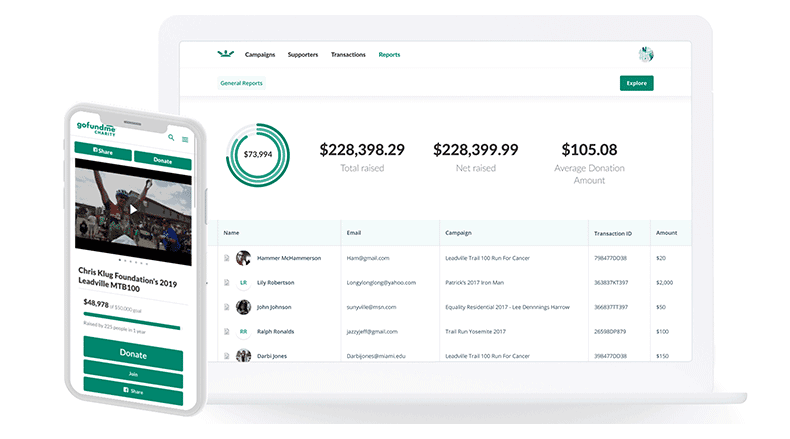The Duty of Area Engagement in Nonprofit Fundraising: Building Lasting Relationships for Lasting Assistance
Neighborhood interaction is significantly recognized as an essential part of effective nonprofit fundraising. By fostering genuine partnerships with regional stakeholders, organizations can cultivate count on and commitment, which are necessary for sustainable assistance. Nevertheless, the techniques and techniques used to involve neighborhoods differ widely, elevating important concerns about performance and effect. What are the most effective techniques for growing these important connections, and just how can nonprofits determine their success in this field? Comprehending these dynamics might significantly influence the future of fundraising efforts and the general objective of not-for-profit organizations.
Understanding Area Involvement
Neighborhood interaction is a vital component of effective not-for-profit fundraising efforts. It describes the strategies and tasks that companies utilize to link with their neighborhood neighborhoods, fostering relationships that are equally valuable. Recognizing community engagement includes recognizing its complex nature, that includes outreach, participation, and partnership. Nonprofits must determine vital stakeholders-- such as area participants, local services, and other organizations-- to create efficient involvement methods.
Reliable community engagement is asserted on active listening and responsiveness to the demands and rate of interests of the area. This procedure includes getting comments, understanding neighborhood characteristics, and making certain that the company's objective lines up with neighborhood concerns. Engaging the area can take different kinds, including public conferences, volunteer opportunities, and collaboration initiatives, each created to motivate participation and investment in the company's objectives.
Furthermore, neighborhood interaction ought to be come close to as a recurring discussion rather than a single effort. By fostering a comprehensive atmosphere where community voices are heard and valued, nonprofits can build a solid structure for future fundraising undertakings. Eventually, a deep understanding of neighborhood interaction equips companies to produce authentic connections that enhance their overall efficiency and sustainability.
Benefits of Solid Relationships
Solid relationships developed via neighborhood engagement return many advantages for nonprofit fundraising efforts. Primarily, these relationships foster trust and trustworthiness, important elements in motivating donors to contribute. When possible fans see a nonprofit proactively associated with their neighborhood, they are most likely to believe in its objective and influence.

Furthermore, these relationships promote efficient communication. Nonprofits can utilize their connections to share tales of influence, updates, and requires, guaranteeing that advocates stay enlightened and involved. This open line of communication not just reinforces bonds however also motivates word-of-mouth promotion, broadening the nonprofit's reach.
Finally, strong area connections can attract new partners and enrollers. Companies and people are extra inclined to line up with companies that demonstrate meaningful community involvement, supplying extra resources and assistance that can substantially boost fundraising capacities. Hence, cultivating durable partnerships through area engagement is indispensable to a nonprofit's long-lasting fundraising success.
Techniques for Effective Involvement
Exactly how can nonprofits effectively involve their communities to boost fundraising initiatives? Establishing targeted strategies is essential for promoting meaningful connections. First, leveraging social media sites systems allows companies to share their mission dynamically and interactively, getting to a more comprehensive audience. Routine updates, involving web content, and calls-to-action can galvanize neighborhood rate of interest and engagement.
2nd, organizing area events, such as workshops, volunteer possibilities, or fundraising drives, promotes in person interaction, permitting nonprofits to display their impact and initiatives. These occasions not just raise funds yet also grow connections and enable community participants to engage directly with the reason.
Third, executing personalized interaction strategies can enhance involvement. Customizing messages to particular benefactor segments based upon interests and previous contributions promotes a sense of belonging and financial investment in the organization's goal.
Finally, producing collaborations with regional organizations and community leaders can enhance outreach initiatives. Collective campaigns can improve presence and credibility, showing a cumulative dedication to the neighborhood's well-being. By incorporating these methods, nonprofits can build enduring relationships that improve fundraising initiatives and drive lasting assistance.
Gauging Interaction Success
While engaging the area is essential for successful nonprofit fundraising, gauging the efficiency of these engagement efforts is just as crucial. Developing clear metrics allows companies to analyze how well they are getting in touch with their target market and accomplishing their fundraising objectives. Secret efficiency signs (KPIs) such as benefactor retention prices, volunteer engagement degrees, and engagement on social media sites platforms offer substantial data for examination.
Frequently analyzing these metrics allows companies to pivot their techniques when needed, guaranteeing that neighborhood interaction remains straightened with their general goal. Furthermore, sharing these outcomes with stakeholders promotes openness and builds trust, motivating additional neighborhood participation. Ultimately, a durable dimension structure not only informs future fundraising efforts however additionally reinforces the partnership in between the nonprofit and its fans, laying the groundwork for lasting success.
Situation Researches in Community Impact
Numerous study show the extensive effect that neighborhood engagement can have on nonprofit fundraising success. One notable example is the "Food for Idea" initiative, where a regional food financial institution partnered with colleges and organizations to host neighborhood suppers. These events not just raised funds but likewise promoted a sense of belonging amongst participants, dramatically increasing contributor retention prices.
Another engaging situation is the "Green Spaces Job," which involved local homeowners in the revitalization of urban parks. This effort not just garnered financial backing from neighborhood businesses yet additionally grew a volunteer base that contributed to continuous maintenance and programs. The feeling of possession and satisfaction amongst area participants converted into continual contributions.
In the realm of arts, the "Art for All" campaign effectively engaged neighborhood artists and customers to produce collective art setups, leading to raised exposure and contributions for a regional arts not-for-profit.
These instances highlight that when nonprofits prioritize area participation, they can develop long lasting relationships that enhance fundraising initiatives, making certain sustainable support and cultivating a vivid neighborhood culture. Such cases demonstrate that neighborhood involvement is not merely a method however a vital pillar of not-for-profit success.
Verdict
To conclude, community involvement is essential to the success of not-for-profit fundraising efforts. By fostering strong connections with neighborhood stakeholders, organizations boost trust fund nonprofit agency and reliability, causing enhanced contributor retention and commitment. Executing efficient interaction techniques and measuring their impact ensures that nonprofits can prosper and adapt. Eventually, a robust foundation of neighborhood support not only enhances fundraising prospective but also cultivates a society of cooperation, essential for attaining long-lasting business objectives and sustaining significant impact.
Nonprofits need to identify essential stakeholders-- such as community members, local companies, and other companies-- to develop effective engagement methods.

In verdict, area interaction is important to the success of not-for-profit fundraising efforts.